Keoladeo National Park
By Albert Smith
What is Keoladeo National Park?
Locally known as Bharatpur Bird Sanctuary, Keoladeo National Park is a wetlands nature reserve that serves as an important flyover for migratory birds from northern Europe and Asia. It is a breeding ground for many species that winter here, as well as being the permanent home for many non-migratory birds. More than 350 bird species have been spotted here, within a relatively small area of 2,873 hectares (about 7,100 acres or 11 square miles). It is the wintering area for a number of endangered or threatened species, including the Siberian Crane, the Greater-spotted Eagle and the Imperial Eagle.
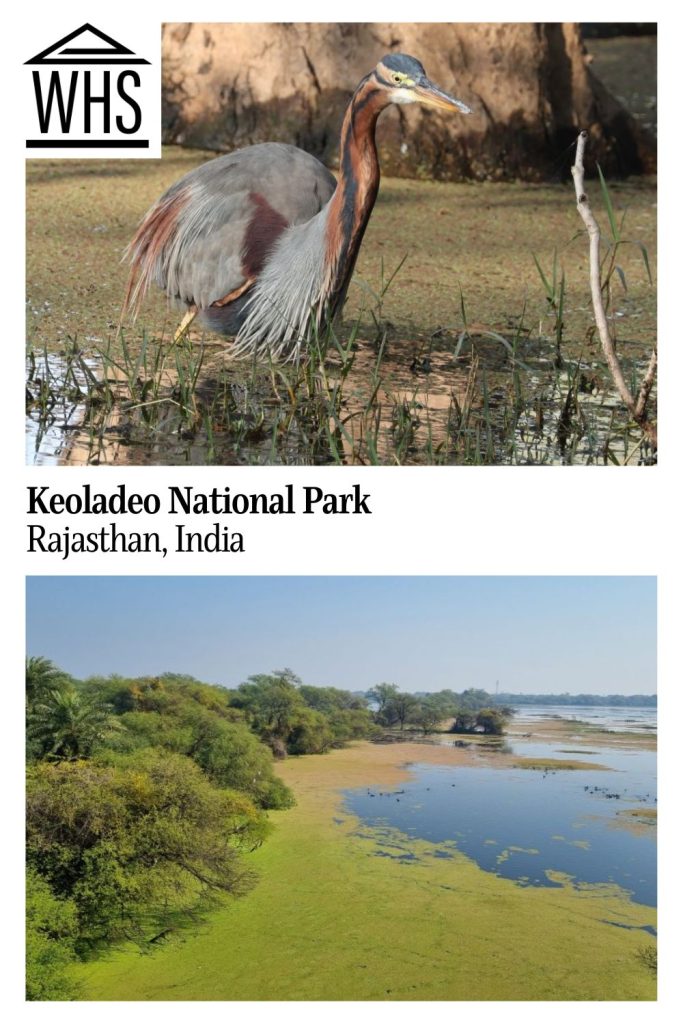
Disclosure: This article contains affiliate links. Making a purchase through an affiliate link will mean a small commission for this website. This will not affect your price. Privacy policy.
The park is not entirely a natural habitat. A ruler of Bharatpur, Suraj Mal, designed it back in the 18th century, and the Maharajahs used it as a duck-hunting reserve in the 19th century. The wetlands are maintained and controlled using a reservoir. The higher ground was used historically for cattle-grazing, but more recently a wall was added around the entire reserve to preserve and protect the area’s biodiversity.
Why is Keoladeo National Park a UNESCO World Heritage site?
Keoladeo is, according to UNESCO, a “wetland of international importance for migratory waterfowl,” including the Siberian Crane, which is critically endangered. They congregate here on their way to other parts of the world, and some use it as a key breeding ground. It also supports many resident nesting birds.
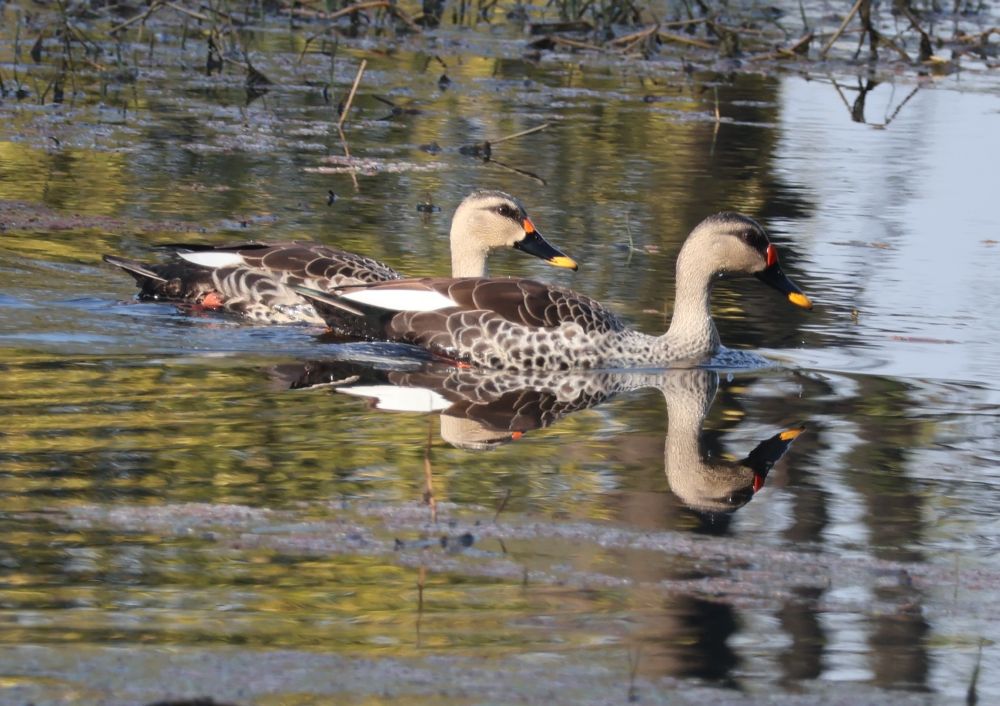
What can you expect on a visit to Keoladeo National Park?
During vacations I like to plan my travel in such a way that I have at least one day for bird watching. In India there are several national parks that provide opportunities to do so, Keoladeo National Park being one of them.
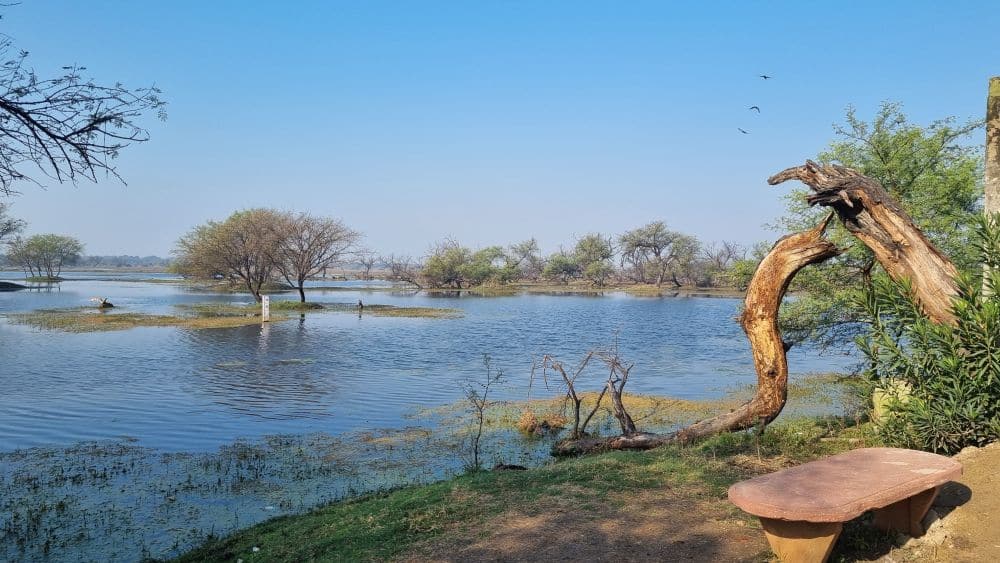
From Agra, where we were staying for a few days, the Keoladeo National Park is only one hour away. To be there at sunrise, I would have to get up at around 5:00 am. Even for me, that was a little too early. So I decided to get up at about 6:30 am, get a tuk-tuk to the bus station and from there a bus in the direction of Jaipur, which stops right at the entrance to the park.
At the entrance I paid my fee and rented a bicycle. Not the best bicycle I have ever ridden, but as the landscape is flat and the road through the park is paved, it did the job.
Along with the bicycle, I also hired a local guide (400 rupees/hour). I usually like to do things on my own, but I am glad I hired a guide. He knew where to find certain birds and was able to help me identify them. I’m pretty good at spotting birds, but I would have never spotted, for example, the two owls sitting in a hole in a tree. Their camouflage was so good that I had to look twice before seeing them.
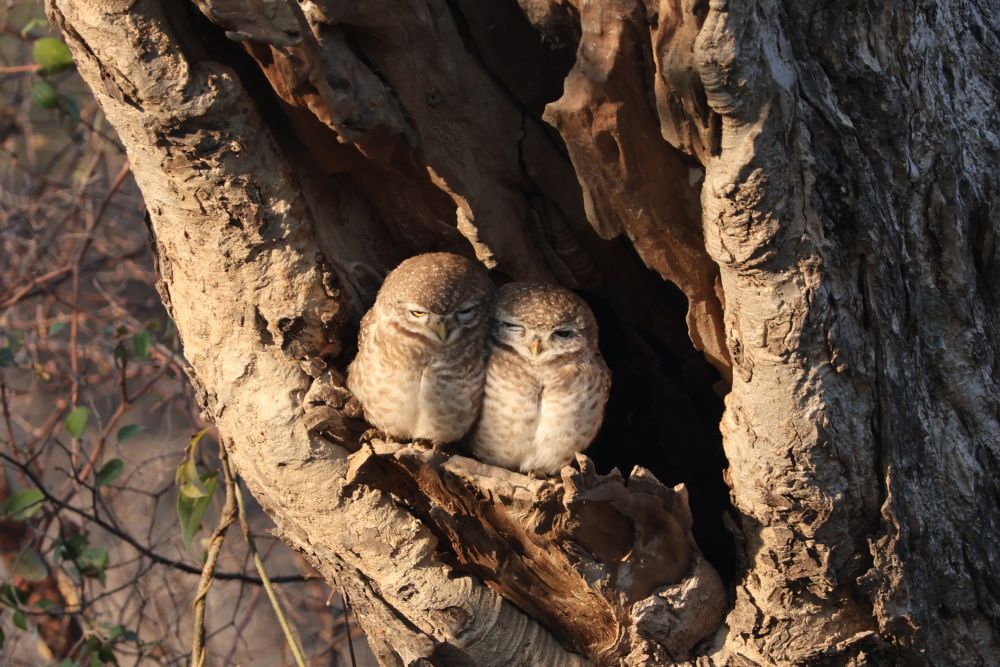
Nevertheless, there were plenty of other beautiful birds to see, varying from the very common Rose-ringed Parakeet to birds you wouldn’t likely see in a city park. During my three-hour stay in the park I saw over 30 different species of birds. My favourites were the Yellow-footed Green Pigeon, the Indian Spot-billed Duck, the Bronze-winged Jacana, the Indian Peafowl and the Purple Heron. I have also never seen so many storks before. There must have been thousands of them, mostly Painted Storks, a magnificent bird. Apart from these birds there are plenty of other waterbirds (ducks, geese, waterhens, pelicans, ibises, etc.).
The six-km long (4 mi) paved road can be divided into two parts: it goes through a dry lowland landscape and then a wetland with water on each side of the road.
Here and there is a path branching off the main road. We walked a few of them. Especially in the second half, they can be muddy and slippery as the ground is composed of clay. At the end of the road is a small temple that has given the park its name. A little shop is nearby, where you can have tea or a soft drink and a snack. There are also two paths, each leading to a watchtower for splendid views over the marsh.
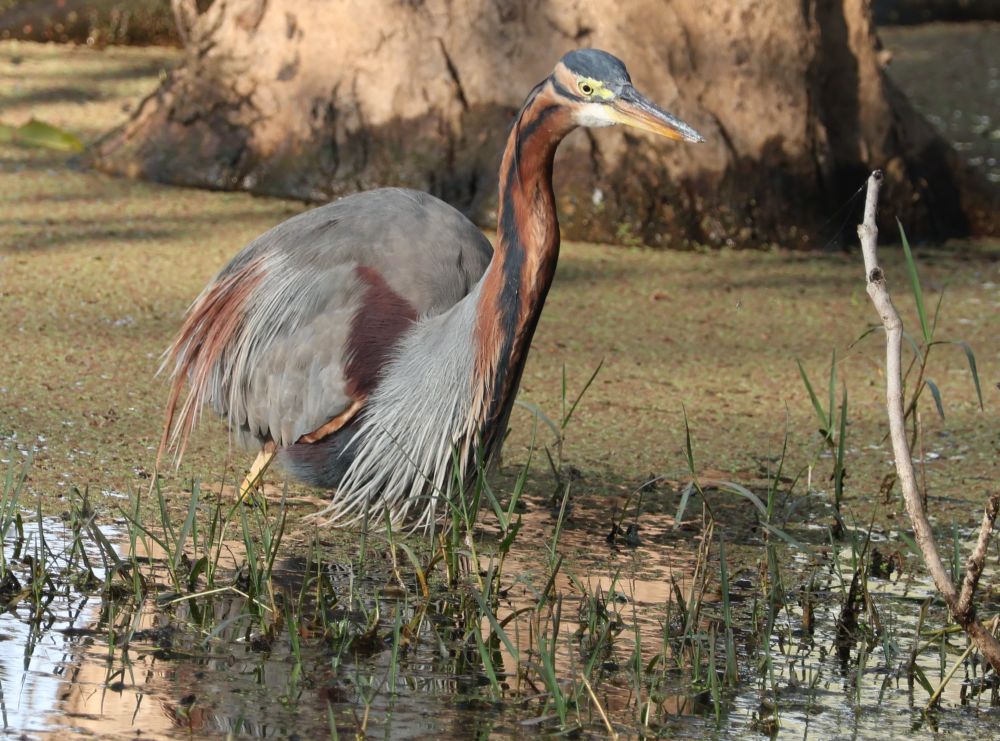
It took us about two and a half hours to cycle the six kilometers After that, I parted from the guide. On the way back I didn’t expect to see many new birds, and he seemed to agree. So I paid him and cycled back at my own pace. I had promised my wife to meet her at Fatehpur Sikri, another UNESCO site, that afternoon, but I could have spent more time in the park and maybe explored the side paths a bit better. However, I hadn’t had any breakfast to speak of so was happy to end my visit.
Is Keoladeo National Park worth visiting?
For someone like me, who likes to go bird watching, it definitely is worth a special visit. Keoladeo is a bird lover’s heaven. You can also see deer, antelopes and monkeys. However, you won’t see any other mammals, like tigers. If you’re not into birdwatching then this is not the park for you.
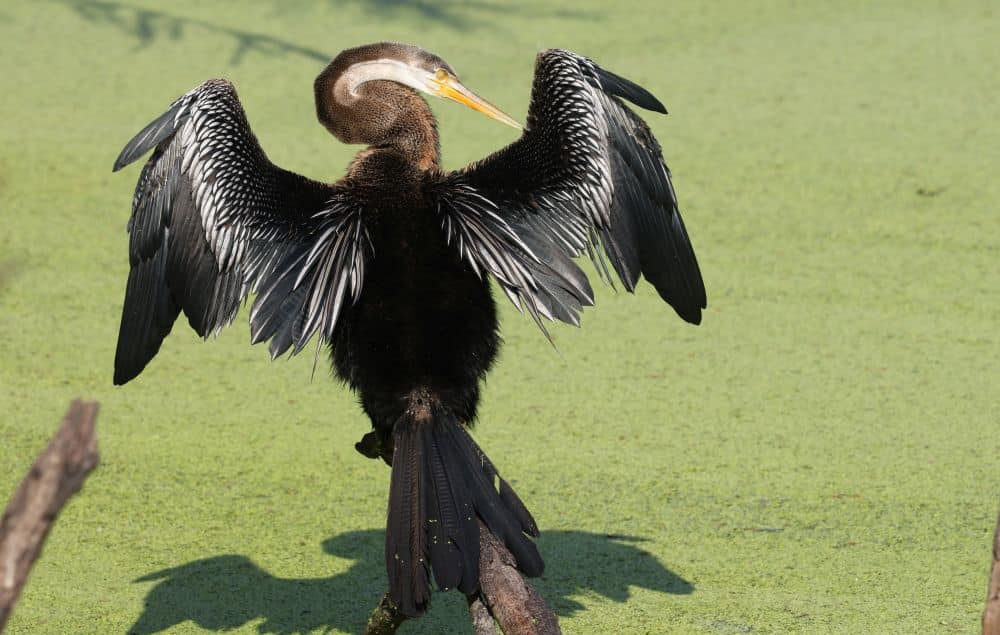
Tips for visiting Keoladeo National Park
I would definitely advise going early in the morning. I arrived at about 8:00 am and that was early enough to see some birds in the dry part of the park. On my way back (around 11 am) I did not see them anymore. Also, the park is relatively quiet early in the morning. When I cycled back there were a lot more tourists in golfcarts coming my way. They were speaking loudly and taking selfies.
You can rent a bicycle, take an electric golfcart or hire a bicycle rickshaw to ride in (though I didn’t see any rickshaws on my visit). If you can, I’d suggest taking the bicycle option. That would allow you to stop more easily the moment you spot a bird.
Hire a guide. Even though I like doing things on my own and I’m a relatively good spotter of birds, an approved guide (Make sure to check!) will know the park and which birds you can expect to see.
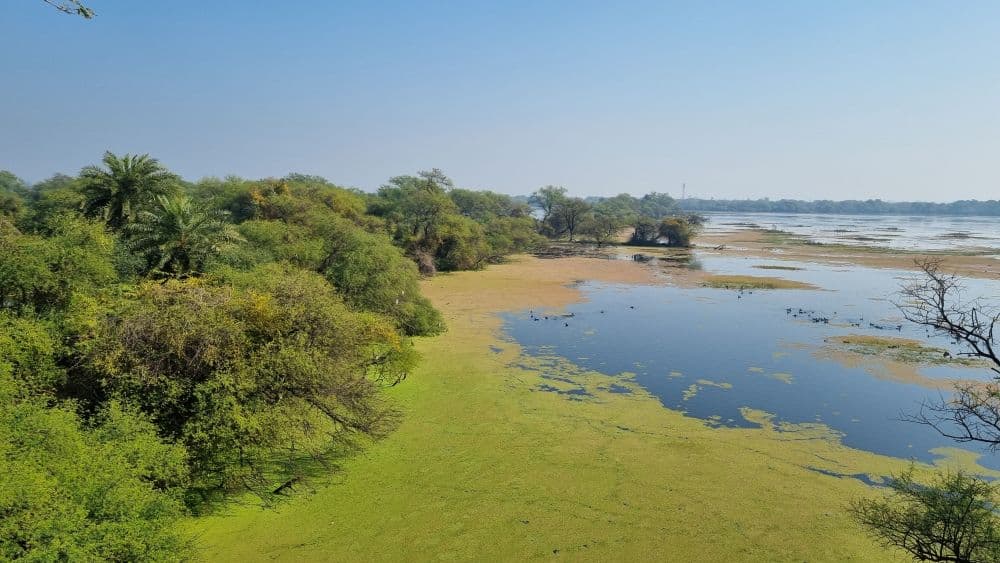
Wear solid walking shoes with a good tread as the side paths can be very slippery.
There is a hotel in the park, so if you want to avoid travelling to the park early in the morning, stay there for a night or two to get the full experience of sunrise and/or sunset.
If you’re visiting here from Agra, don’t miss its other UNESCO sites: the Taj Mahal and Agra Fort within the city, and Fatehpur Sikri an hour outside. If you visit from Jaipur, the old city of Jaipur is a UNESCO site, and Amber Fort nearby is part of the Hill Forts of Rajasthan UNESCO site.
Find accommodations in Agra by clicking on the map below:
Where is Keoladeo National Park?
Keoladeo National Park is located on the road between Agra and Jaipur. If you dare to drive, (Warning: it is organized chaos on Indian roads!), you could rent a car. If you go really early, the traffic, once you are out of Agra, is not that bad and it’ll take about an hour. From Jaipur the drive is four or five hours long.
Alternatively, you could hire a car and driver to take you there, wait for you and drive you back. Regular cars may not enter the park, though, so you’ll still have to hire a bike, golfcart or bicycle rickshaw. Another option is to book a complete tour from Agra including a guide.
It is also possible to take a train to Barathpur and then take a tuktuk to the park entrance. However, there are only two trains from Agra in the morning at 6:00 am and 6:30 am and then no more until the afternoon. It may also be a bit tricky to get a ticket as advance booking is difficult if you do not want to travel third class.
As mentioned above, I took a bus. At the Idgah bus station in Agra, buses to Jaipur leave every half hour. Regular buses are dead cheap (I paid 91 rupees one way). If you go early in the morning in January or February, wear something warm as there is no heat in the bus. If you want more comfort, there are also deluxe buses. They cost more, but they go less frequently. It would be wise to reserve a seat in advance.
Use this website to book trains, buses and/or taxis in India.
For more information about Keoladeo National Park, its opening hours and admission fees, see Rajasthan Tourism’s website.
Have you been to Keoladeo National Park? If so, do you have any additional information or advice about this UNESCO World Heritage site? Please add your comments below!
